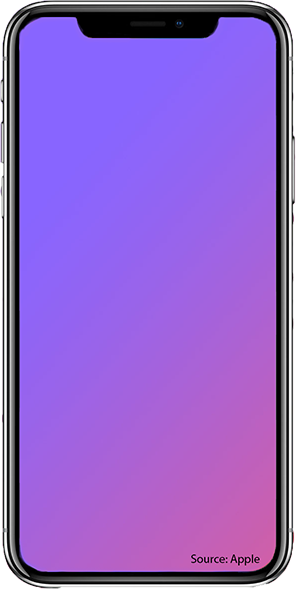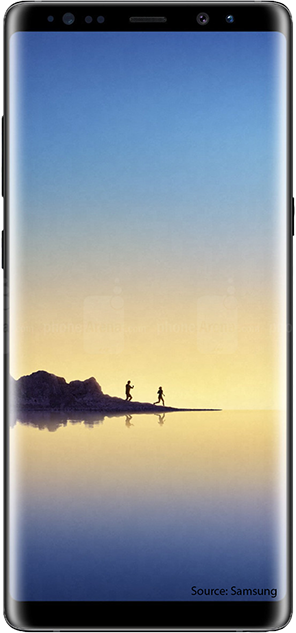NEW PHONES ANSWER CALLS TO KEEP UP
2016’s release of the iPhone 7 put many consumers in dismay. With the inconvenient and confusing removal of the 3.5mm headphone jack and the overall similarity to the iPhone 6 and 6s, many felt underwhelmed. This year, Apple is seeking to rectify iPhone users’ disappointment with the iPhone X (pronounced iPhone ‘ten.’)
This phone changes many features that have been standard of iPhones for years and is said to be a flagship for a new decade of phones, similar to how the last decade has built upon the original iPhone model. On the one hand, this is a compelling departure from the norm, but it also means that this iPhone will likely have more issues. Think of it as you would a new operating system. When a new one is released, like iOS11, it takes several patches to optimize it. In this case, it will most likely take one or two more phone releases to fully optimize this new design. For example, the iPhone X has a fullscreen display, meaning the actual screen extends all the way to the top and bottom edges of the phone. It looks sleek, except for the obtrusive black notch at the top that houses the front-facing camera and the ear speaker, meaning all apps will have bars on the sides until the developers update them for iPhone X support. Things like the notch will be refined and improved upon in future iPhones, so it might be in the consumer’s best interest to wait until 2018 to buy a new phone.

Thankfully, for those that suffer from shiny object syndrome, Apple has released a safer alternative in the iPhone 8 and 8 Plus. Regarding design, this phone more closely resembles the 6, 6s, and 7 models, but still has many of the iPhone X’s bells and whistles. For example, both models have Apple’s new wireless charging feature (this also means that both have glass backs: more fingerprints, less dropping.) The iPhone 8 also boasts improved camera resolution, water resistance, and, finally, some major improvements to the battery. Not only does the 8 have wireless charging and a brand new “fast-charging” cable, but an impressive battery life of around 26 hours. While its Android counterparts still triumph in the battery life department, 26 hours is a significant improvement for iPhones. However, the most compelling reason to opt for the iPhone 8 over the iPhone X is the price tag. The cheapest version of the iPhone X is set to release for $999.00 with the upgraded storage space costing $1,149.00. A thousand dollars is a daunting commitment, especially if you want to keep upgrading your phone each year. The versions of the 8, on the other hand, range from $699.00 to $949.00. While expensive, this price tag might be slightly more manageable.
The iPhone X more than makes up for the iPhone 7’s disappointment, although it might not be worth it, given the inevitable issues with the new design.
ANDROID ALTERNATIVES
Last year, Google’s successful launching of the Pixel model came shortly after the Samsung Galaxy Note 7 failed spectacularly thanks to its batteries’ tendency to explode. Now, one year later, Samsung and Google have launched their Android competitors to Apple’s new iPhones, both with notable changes.
On October 4th, the highly anticipated Pixel 2 and Pixel 2 XL were unveiled at Google’s hardware event. The new Pixels feature a similar design, with aluminum and glass making up the back of the phone, as well as a fingerprint scanner in the center, like the previous Pixels. The new Pixel has a 5.0-inch, 1080p display, while the new XL has a 6.0-inch QHD+ (2880 x 1440) display with a slightly elongated aspect ratio of 18:9, rather than the standard 16:9 used in 1080p displays. In another difference, the XL has a 25% longer battery life than the Pixel 2. However, the devices share almost all of their other features, such as an improved 12 MP camera, which Google boasts as having the highest ever DxOMark score given to a smartphone (again). Additionally, the Pixels have 4 GB of RAM, 64 and 128 GB storage options, and stereo front-facing speakers. However, the new speakers come at a cost, because the Pixels are following the iPhone in the unnerving trend of removing the headphone jack. This marks a significant shift in Android phone design trends and further validates Apple’s bold strategy that many ridiculed in 2016. The Pixel 2 and Pixel 2 XL retail at $649 and $849 respectively.

Thankfully, Samsung’s new Galaxy Note 8 has asserted itself as a strong competitor to both the iPhones and Pixels, and its preservation of the headphone jack will satisfy many. The Note 8 is also a high-end phone by all measures, with a massive 6.3 inch QHD display and an 18:9 aspect ratio, 6 GB of RAM, internal storage available up to 256 GB, and two 12 MP sensors on the back of the phone in order to create an even more versatile camera experience. In keeping with Samsung’s vision for the Galaxy Note line, the Note 8 comes with a built-in stylus, called the S-Pen. One possible shortcoming to the Note 8’s design may be the 3,300 mAH battery, which is smaller than the Pixel 2’s, despite its larger screen and more battery-intensive software. Speaking of software, Samsung’s Android-based skin (called TouchWiz) currently runs only on Android 7 Nougat, rather than the new Android 8.0 Oreo, and users will have to wait a long time after each new Android update for Samsung to push their updated software to its devices. The Note 8 starts at $929.99.
In conclusion, Android purists would be justified in selecting the Pixel 2 as a sleek, well-performing smartphone with cutting edge software and hardware, whereas those looking for a larger, extremely high-end phone might wish to choose the Galaxy Note 8.








